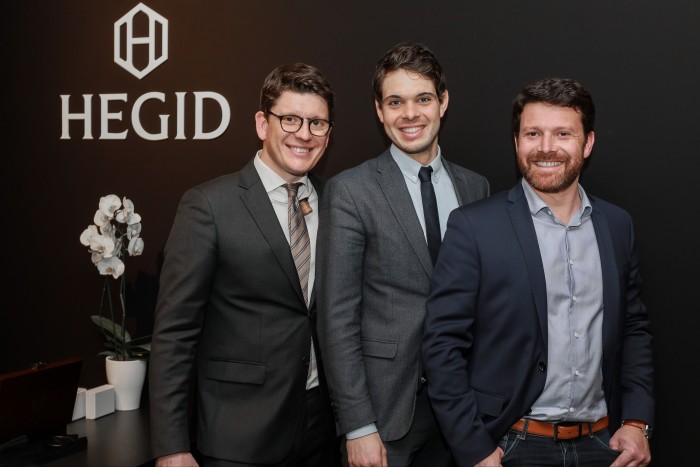Young talent and old traditions drive a ‘Made in France’ watchmaking renaissance

With names such as Cartier, Hermès and Louis Vuitton, you could never accuse France of having a small presence on the horological stage. But these illustrious jewellers and luxury brands — whose watches are among the most feted of recent times — all base their watchmaking operations in Switzerland.
Now, though, away from the billion-dollar conglomerates and the boutiques of Paris’s Place Vendôme, there is another French story unfolding: one of a true renaissance in watchmaking.
Over the past few years, watch connoisseurs have heaped praise on a fresh generation of independent, artisanal watchmakers — craftsmen who have all graduated from the Lycée Edgar Faure, a prestigious watchmaking school in Morteau, eastern France. Alumni, including Simon Brette, Sylvain Pinaud, Remy Cools and Théo Auffret, have become sought after for their hand-finished, exclusive works.
Their success is testament to the fresh horological talent emerging from France, but their watches cleave to 18th-century traditions and command both high prices and long waiting lists.
However, there is a thriving generation of independent French watch brands competing at more accessible price points, interpreting familiar tropes through a quintessentially French lens. According to Guillaume Adam, general secretary of the trade organisation France Horlogerie, watchmaking in France employs around 3,000 people at about 100 companies, generating €410mn in annual revenue. “It’s a growing sector,” he says. “The French watch industry grew by 12 per cent in 2022, and 7 per cent in 2023.
“A growing consumer interest in French watch brands is supporting the development of the more classical brands that have existed for decades and a lot of new French brands that emerged in the last five to 10 years.” These new brands rely, for the most part, on Swiss movements, but that may be about to change.

France, like Switzerland, was hit by the so-called quartz crisis of the late 1970s, when the untethering of the Swiss franc from fixed exchange rates coincided with the invention of mass-produced quartz watch movements in Japan that would render traditional watchmaking uncompetitive.
“Historically, it was a country making movements for decades, from the 1930s to the 1980s,” says Emeric Delalandre, co-founder of Hegid, a French brand that made its debut in 2016. “Then, the quartz crisis completely shifted the market. The French side [of the industry] didn’t react well to the crisis.
“The Swiss, especially with the Swatch group and Mr Hayek [Swatch co-founder Nicolas Hayek] turned watches into a desired product. But, in France, they thought they were still making useful, practical products.”
At London’s WatchPro Salon, an annual trade and consumer fair held this year at the start of November, Hegid announced its first watch using a French-made movement. The Specimen FE-01 calibre has been developed by France Ebauches, a manufacture based in Maîche, in the Doubs region of France.
Despite having been one of the largest makers of mechanical watch movements in the world, France Ebauches filed for bankruptcy in 1994. An attempt to resurrect it in the early 2000s proved abortive and, in 2017, it was acquired by the Spanish-owned Festina Group, which owns Swiss movement producer Soprod. Since then, it has been operating as a contributing part of the group’s movement production operations. But, in 2023, the decision was made to create whole movements in France once more.

Mechanically similar to Soprod’s Newton P092 calibre, the FE-01 is, admits Delalandre, a little more expensive — although it is a price he is willing to pay for the prestige of being able to read “Made in France” around its edge.
Unlike “Swiss Made” — a term with clearly defined criteria, even if critics say they are too broad — “Made in France” takes its meaning from the EU’s definition of “substantial transformation”, according to Adam. France Ebauches does not publish details of its supply chain, saying only that the movement contains no components from Asia.
Meanwhile, high-end watchmaker Pequignet is described by its president Hugues Souparis as “the only haute horlogerie manufacture doing 100 per cent of its movement engineering and production with all components sourced in the Jura region, the majority from the French side”. The brand says 72 per cent of its movements are created in France, with every component coming from within an 80km radius of the factory.
That area includes several towns on the Swiss side of the border, and speaks to the intertwined nature of the Swiss and French watchmaking industries. “If you go to a Swiss watch manufacture and look at the plates on the cars in the parking lot, they’re French plates,” says Gabriel Vachette, co-founder of Serica, a Parisian brand focusing on modern interpretations of classic tool watches.
“Because, actually, the knowhow is not only in Switzerland, it’s also in France. For us, being in France and being in Paris especially brings a lot of creativity. It’s a matter of being in a city that moves, that’s dynamic. We’re not in a small village of Switzerland, completely forgotten and not in contact with people.”
The cosmopolitan nature of Parisian culture, and an emphasis on an intangible French sense of design and style, is a recurring theme. Hegid, whose watches use a patented modular design based around swappable case shapes, describes its approach as “dressmaking for watches”, while Adam says French brands “are really appreciated for their creativity”.
At Herbelin, a French watchmaker founded in 1947, sales manager Nick Bassett says the company has “worked really hard in the last five to 10 years to emphasise the Frenchness of the brand because it’s a point of difference”.
He highlights its women’s watches, which constitute 60 per cent of the range, as an area in which founder Michel Herbelin was able to innovate and find a path through the quartz crisis. “It’s chic style,” says Bassett. “It’s romantic and elegant, all the things you would associate with France.”
#Young #talent #traditions #drive #France #watchmaking #renaissance






